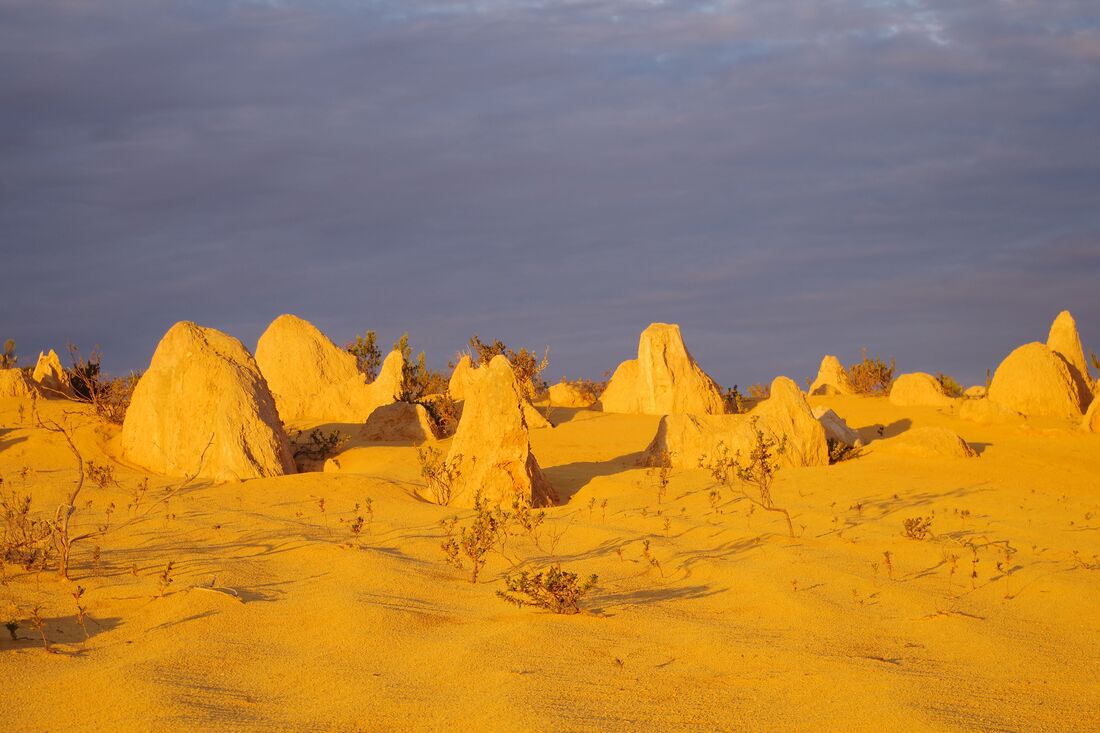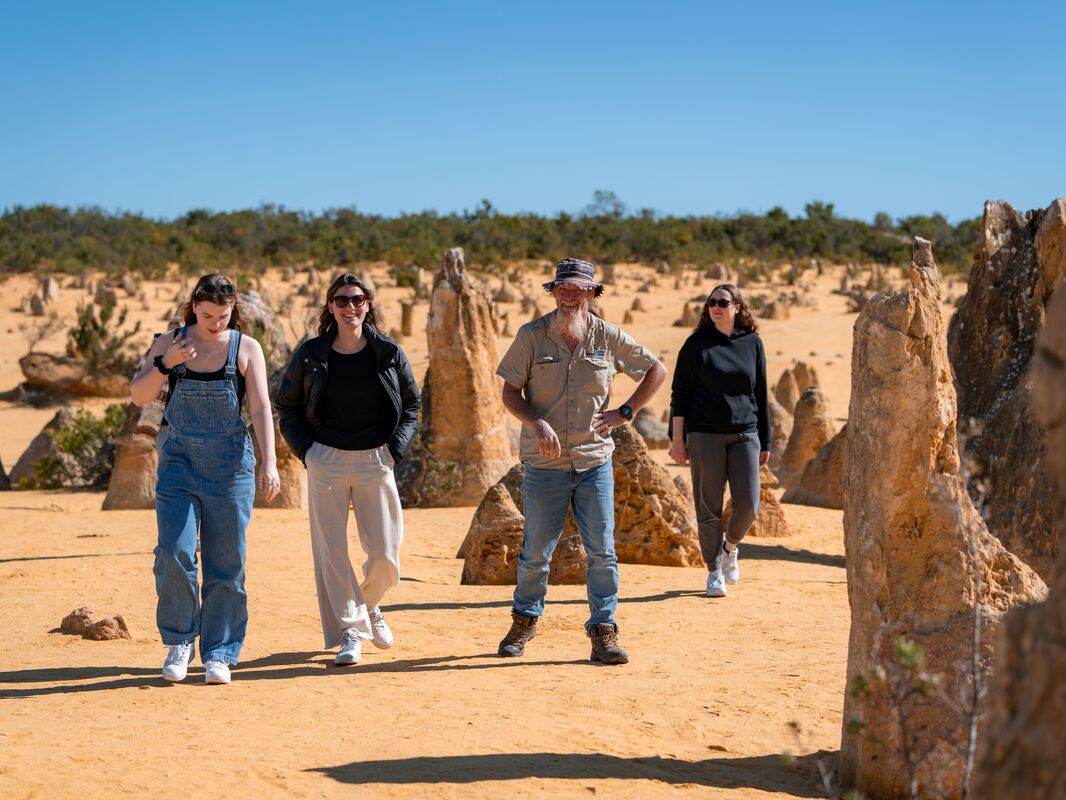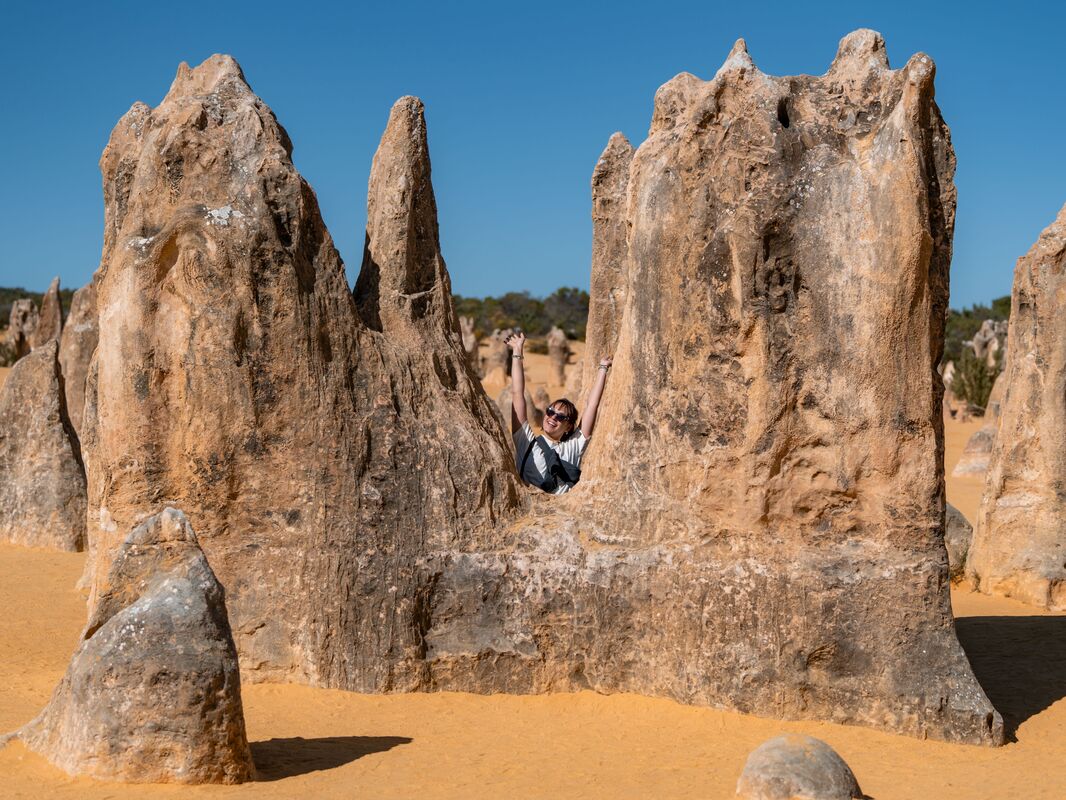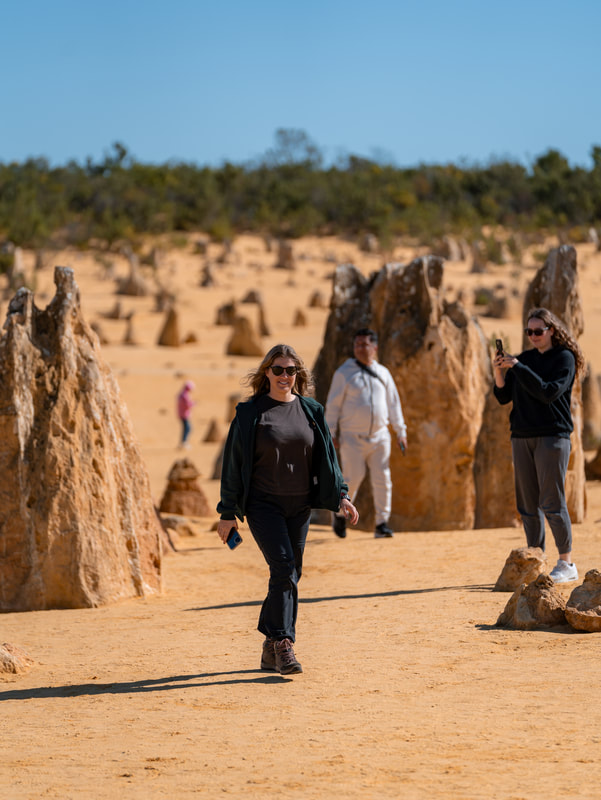The Pinnacles Desert is home to stunning limestone pillars that have been sculpted over the course of 25,000 to 30,000 years, creating a truly otherworldly landscape. These majestic rock formations are the result of marine life from an earlier era, where seashells were broken down into lime-rich sands. Over time, these sands were blown inland, forming towering dunes. While the precise process that transformed these sands into the iconic columns we see today remains a mystery, three major theories have been proposed to explain the formation of the Pinnacles Desert. The Science Bit
A third proposal suggests that plants played an active role in the creation of the Pinnacles, based on the mechanism that formed smaller "root casts" in other parts of the world. As transpiration drew water through the soil to the roots, nutrients and other dissolved minerals flowed toward the root—a process termed "mass-flow" that can result in the accumulation of nutrients at the surface of the root, if the nutrients arrive in quantities greater than that needed for plant growth. In coastal aeolian sands that consist of large amounts of calcium (derived from marine shells), the movement of water to the roots would drive the flow of calcium to the root surface. This calcium accumulates at high concentrations around the roots and over time is converted into a calcrete. When the roots die, the space occupied by the root is subsequently also filled with a carbonate material derived from the calcium in the former tissue of the roots, and possibly also from water leaching through the structures. Although evidence has been provided for this mechanism in the formation of root casts in South Africa, evidence is still required for its role in the formation of the Pinnacles. Source: kids.kiddle.co Whichever theory you choose, the Pinnacles truly are a magnificent sight and a special stop on our tour. We recognise and acknowledge Yued people as the traditional custodians of Nambung National Park
Comments are closed.
|







